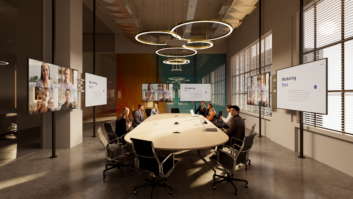 AV professionals are used to addressing concerns about whether or not the end result of a project is truly worth the price. But the single biggest impediment to clients maximising their ROI is themselves: not spending the time or money to do it right the first time. As a result, they either struggle with ineffective systems or end up spending even more to fix problems later.
AV professionals are used to addressing concerns about whether or not the end result of a project is truly worth the price. But the single biggest impediment to clients maximising their ROI is themselves: not spending the time or money to do it right the first time. As a result, they either struggle with ineffective systems or end up spending even more to fix problems later.
In essence, the five key ways to maximise ROI are: do it right the first time, do it right the first time, do it right the first time, do it right the first time, and – most importantly – do it right the first time. But what does that look like in practice?
USER EXPERIENCE
The first step is defining what your AV system needs to accomplish. Are you building out an 18-person Microsoft Teams Room? Or a big three-way divisible training room? Maybe just a BYOD-only huddle space, a classroom, or a large auditorium designed to have a live operator? In any case, it’s critical to identify what kind of end-user experience you’re trying to achieve.
At some point you’ll need to dig into the details of sources and destinations, audio and camera requirements, and whether the system design needs to be informed by some existing technology standards. It’s also critical to identify how your users expect the system to behave. The more you can define your objectives upfront, the more successful your deployment will be.
That said, determining these needs can be daunting — especially when vendors claim their solutions can do it all.
MARKETING HYPE
Remember that manufacturers and vendors are always aiming to sell their products and services. While they rarely outright misrepresent their offerings, more often than not they frame their capabilities in ways that may not match real-world performance.
AV professionals see this kind of issue a lot with enterprises who have been led to believe they can meet all of their conference room AV needs with a “room kit-in-a-box” solution from one vendor or another. These kits are marketed as easy, plug-and-play setups that eliminate the need for an AV integrator, and while they can work great for many room types, it’s easy to push beyond their limits.
For instance, someone might install a soundbar that boasts an incredible 30-foot pickup range in a large boardroom, only to find that the audio is unintelligible in an actual meeting once the room is full of people.
Those solutions can and do work well for certain environments, but how do you know when a solution is the right fit for your needs?
TRUSTED PARTNERS
AV integrators work for companies like yours, with products like these, daily. They know firsthand what does and doesn’t work for specific room types or desired experiences, which manufacturers are honest and which overhype their products, and whether or not solutions are reliable and well-supported.
It’s very easy to find vendors who will sell you whatever list of equipment you’ve requested – with no accountability down the line if it doesn’t meet expectations. A trusted integration partner, however, will guide you through the process of identifying your needs and finding the right AV solution to match them.
How do you know if an integrator can be that trusted partner for you? Engage with them and see what kinds of questions they ask. Are they constantly trying to upsell and push unnecessary upgrades, or are they focused on understanding your requirements and explaining how different solutions could work for you?
PILOT ROOMS
When making a major change to system standards, deploying a pilot room (or rooms) is a chance to make sure you’re getting the performance you want – and need – before going all-in.
This may reveal that you don’t like a feature, or you’d like to add or remove some functionality. It helps to ensure you’re confident in your design and integration partner and it’s a great opportunity to work through hurdles with other teams (such as networking).
The pilot phase also provides an opportunity to work through potential challenges, so that the design and implementation process runs smoothly once full deployment begins.
SUPPORT PLAN
No matter how well a system is designed, things will go wrong. They always do. But how will you identify and resolve problems? Here are some things to consider:
• How are you finding out about issues? Calls, emails, support tickets?
• Do you have a cloud monitoring tool sending you alerts?
• Once you know about the issue(s), are you and your team equipped to troubleshoot and resolve it?
• If you can’t solve it quickly, what’s your escalation path?
• Does your integrator have a responsive service department?
• Does your facility need full-time on-site AV support?
Whether or not you have all these questions answered, you need some sort of support plan in place. Without one, you risk starting a Monday morning with every conference room offline, frustrated executives, and no clear plan for how to fix the problem.
The bottom line? If you fail to plan, you plan to fail. And you certainly won’t see ROI on your AV investment if your rooms are down and no one can get any work done.
It’s true that the upfront investment of doing it right the first time may not seem worth it. But the alternative – the wasted time, frustration, and costly fixes of dealing with broken or ineffective systems – is far more expensive in the long run. You’ll quickly find that it’s much more productive, and much less frustrating, to make that proper investment on the front end..







